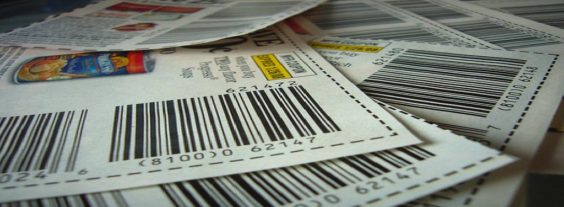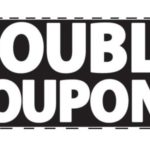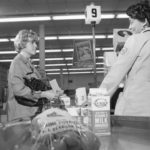
Four decades ago, inflation was rampant. Food prices were on the rise, but coupons became easier to find, and use. Add promotional gimmicks like double coupons, and what happened?
Couponing became cool!
As we wrap up the first anniversary commemoration of Coupons in the News, a weeklong series on the 40th anniversary of “couponing” now concludes with a look at the combined effects of the previous four stories in the series. In 1973, high-low pricing was born, giving coupon users a new way to save big. The coupon insert became a permanent fixture in our Sunday papers. The first bar-coded coupons were created. And double coupons became all the rage.
Together, these developments 40 years ago helped couponing become a craze – one that continues today.
From the time that the first grocery coupon for Grape Nuts was issued around the turn of the last century, the merits of coupons as a marketing tool were hotly debated. “A woman with a coupon does not use twice as much soap. She merely switches from one brand to another,” one supermarket owner complained to the New York Times in 1955. “If manufacturers can afford to give a coupon, then the price is too high.”
A year earlier, in 1954, Safeway issued a formal complaint to manufacturers, claiming that “retailers are being flooded with manufacturers’ coupons and they are not receiving big enough fees for handling them,” the Wall Street Journal reported. An industry standard 2-cent handling fee was soon established, which has gone up a few pennies since then.
Even the man who inherited the legacy of C.W. Post’s 1-cent Grape Nuts coupon rued the day his predecessor introduced coupons to the grocery store. “The whole food industry ‘deplores the rapid growth’ of coupons,” the Wall Street Journal quoted Charles G. Mortimer, president of General Foods Corporation, as saying in 1954. General Foods was a direct descendant of Post’s original Postum Cereal Company (which was ultimately swallowed up by Kraft in 1990). “But the industry is so highly competitive,” he lamented, “there isn’t much chance the coupons will be done away with.”
Some two decades after his comments, any thought that coupons might be done away with, went out the window.
In 1973, coupon use skyrocketed. The industry trade publication Progressive Grocer’s annual report of the grocery industry found that 59% of shoppers surveyed said they used coupons during the year, way up from about 36% just one year earlier. “In the face of runaway food prices and fuel shortages,” UPI reported, consumers are “shopping more judiciously, using not only newspaper cents-off coupons but also those from box tops, mail, magazines and store circulars.”
Still, the critics complained. They said coupons were just an artificial discount that allowed stores and manufacturers to keep their regular prices high, for those poor souls who didn’t jump on the couponing bandwagon. “Manufacturers are maintaining high prices as a hedge against the possible reinstatement of price controls,” the Los Angeles Times reported in 1974. “They have money to burn,” one industry insider told the paper, “that’s why all the coupons.”
And some shifty shoppers gave the critics even more to complain about. As the popularity of coupon use grew 40 years ago, so too did the popularity of coupon misuse. A U.S. Postal Service spokesman told the Associated Press that coupon fraud cost manufacturers about $60,000 in 1972. In 1973, that total shot up to $400,000. “Among the culprits are the housewife who cashes in coupons for products not on her shopping list,” the AP reported, “to organized big dollar fraud using the mails” – not to mention some dishonest grocers who submitted coupons for products they never even sold. “If misredemption doesn’t come down,” the president of the Grocery Manufacturers of America said, “the economics will get so bad, the manufacturers will have to abandon couponing.”
Thankfully, that didn’t happen. The explosion in the popularity of couponing brought those who were already serious couponers out of the shadows. Underground newsletters about coupons and rebates began going mainstream. Susan Samtur, “the Original Coupon Queen”, got her start long before her 2012 appearance on one of the last “Extreme Couponing” episodes on TLC. She started her “Refundle Bundle” magazine for friends and family, typing up lists of savings tips and refund offers. In 1973, she turned it into a business and began selling the magazine for a profit – helping to pave the way for the Coupon Moms and Krazy Coupon Ladies of the world today.
“Once primarily used to introduce new products,” the Los Angeles Times reported in 1975, “the coupon now plays a major role in bringing consumers into supermarkets and attracting an interest in a wide range of products.”
You can say that again. Happy 40th anniversary to “couponing” as we know it today, and thanks to you for helping Coupons in the News reach the one-year mark this week. Here’s to another year, and may couponing itself continue on for at least another 40.















